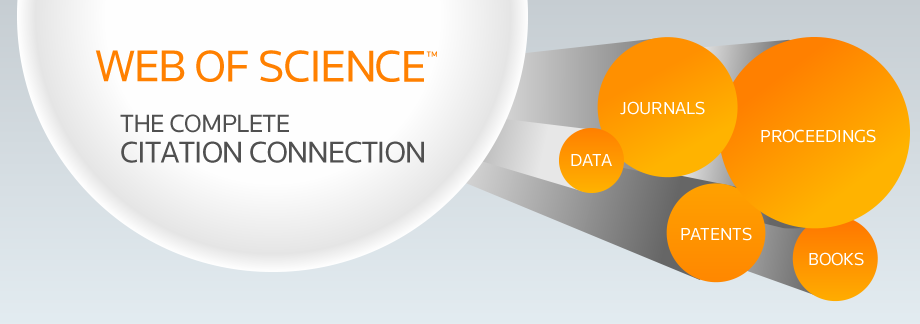Source: http://wokinfo.com/citationconnection/realfacts

Web of Knowledge - Real Facts - IP & Science - Thomson Reuters

This foundational, curated content is delivered within the broader
context of global research – across disciplines and content types – all
from a single destination to help clearly communicate the path of a
discovery.
and maintained collection of the world’s most influential journals
across all disciplines.
We index all types of scholarly outputs, not just publications. Because
coverage should be comprehensive and complete
database available. Providing you with the foundation for discovery.
Quality and quantity shouldn't be mutually exclusive.
nuances of a field is what leads to amazing results. Browse, view and
select a complete verified cited reference.
cover-to-cover indexing. We never misrepresent partial coverage as full
coverage.
context of global research – across disciplines and content types – all
from a single destination to help clearly communicate the path of a
discovery.
Citation Indexing since 1960
Using Dr. Eugene Garfield’s revolutionary concept of citation indexing, we brought you Web of ScienceTM. A full range of data, tools and technology in one, integrated, ever-evolving resource.- FACT: Journal Impact Factor was introduced almost half a century ago.
- FACT: Journal Citation Reports was the first tool for in-depth analyses and ranking of scholarly and professional journals.
- FACT: InCites is the first-ever
research evaluation tool on the Web, allowing the most comprehensive
citation-based analysis of institutional research.
- FACT: Web of Science was the first Web-based citation indexing resource of scholarly and professional journals.
- FACT: 30 years of bibliometric
expertise and 50 years of citation analysis serve as the backbone for
our new Research Analytics suite.
- FACT: The most prestigious institutions and agencies in the world rely on Web of Science citation data to make hiring decisions.
Objective and Publisher Neutral.
Web of ScienceTM Core Collection is a carefully selectedand maintained collection of the world’s most influential journals
across all disciplines.
- FACT: Thomson Reuters has a dedicated team of experts who evaluate all publications.
- FACT: The journal selection process is publisher neutral and applied consistently to all 3,300 publishers.
- FACT: We select only the most relevant research produced by commercial, society, open access publishers, and more.
- FACT: Indexing spans cover-to-cover for all publications. Existing journal coverage is constantly under review.
More than just science AND JOURNAL LITERATURE
Our social science and arts & humanities coverage is unmatched.We index all types of scholarly outputs, not just publications. Because
coverage should be comprehensive and complete
- FACT: Web of Science Core Collection covers over 5,300 social science publications across 55 disciplines back to 1900.
- FACT: The Social Sciences Citation Index® contains 7.8 million records.
- FACT: The Arts & Humanities Citation Index® contains 4.5 million records.
- FACT: We cover 2,500 arts & humanities journals, from 1975 to the present.
- FACT: Conference proceedings coverage in all fields of the sciences, social sciences, and arts & humanities is unmatched.
Indisputably the largest.
Web of Science Core Collection is indisputably the largest citationdatabase available. Providing you with the foundation for discovery.
Quality and quantity shouldn't be mutually exclusive.
- FACT: Web of Science Core Collection is the only true cited reference index with one billion+ cited references.
- FACT: It contains over 90 million records.
- FACT: We actively cover more than 12,000 high impact journals.
- FACT: It contains 8.2 million records across 160,000 conference proceedings.
- FACT: We offer fully indexed journal and book-based proceedings with 15,000 proceedings added
each year.
THE COMPLETE PICTURE
A foundation of influential literature is key. But understanding thenuances of a field is what leads to amazing results. Browse, view and
select a complete verified cited reference.
- FACT: There are 19.9 million records in Current Contents Connect.
- FACT: The Data Citation Index houses 2.6 million records.
- FACT: Zoological Record holds 4 million records.
- FACT: There are 26.4 million records in Derwent Innovations Index.
- FACT: The Biosis Citation Index houses 23.6 million records.
- FACT: Medline has 23.6 million records.
NO GAPS, NO PARTIAL COVERAGE, AND NO MISSING EDITIONS
You get complete and accurate access to research materials withcover-to-cover indexing. We never misrepresent partial coverage as full
coverage.
- FACT: We offer cover-to-cover indexing, including full papers and reviews, editorial material, book reviews, and more.
- FACT: You’ll get quality controlled data with unified formatting.
- FACT: Author cited references are captured for all full journal articles indexed from 1900 to now.
- FACT: Times Cited links are standard for all articles back to 1900.
- FACT: We have 26 million pre-1996 records.
- FACT: There are 65 million cited
references captured yearly connecting foundational content to the data,
books and patents that informed it.
Web of Knowledge - Real Facts - IP & Science - Thomson Reuters









